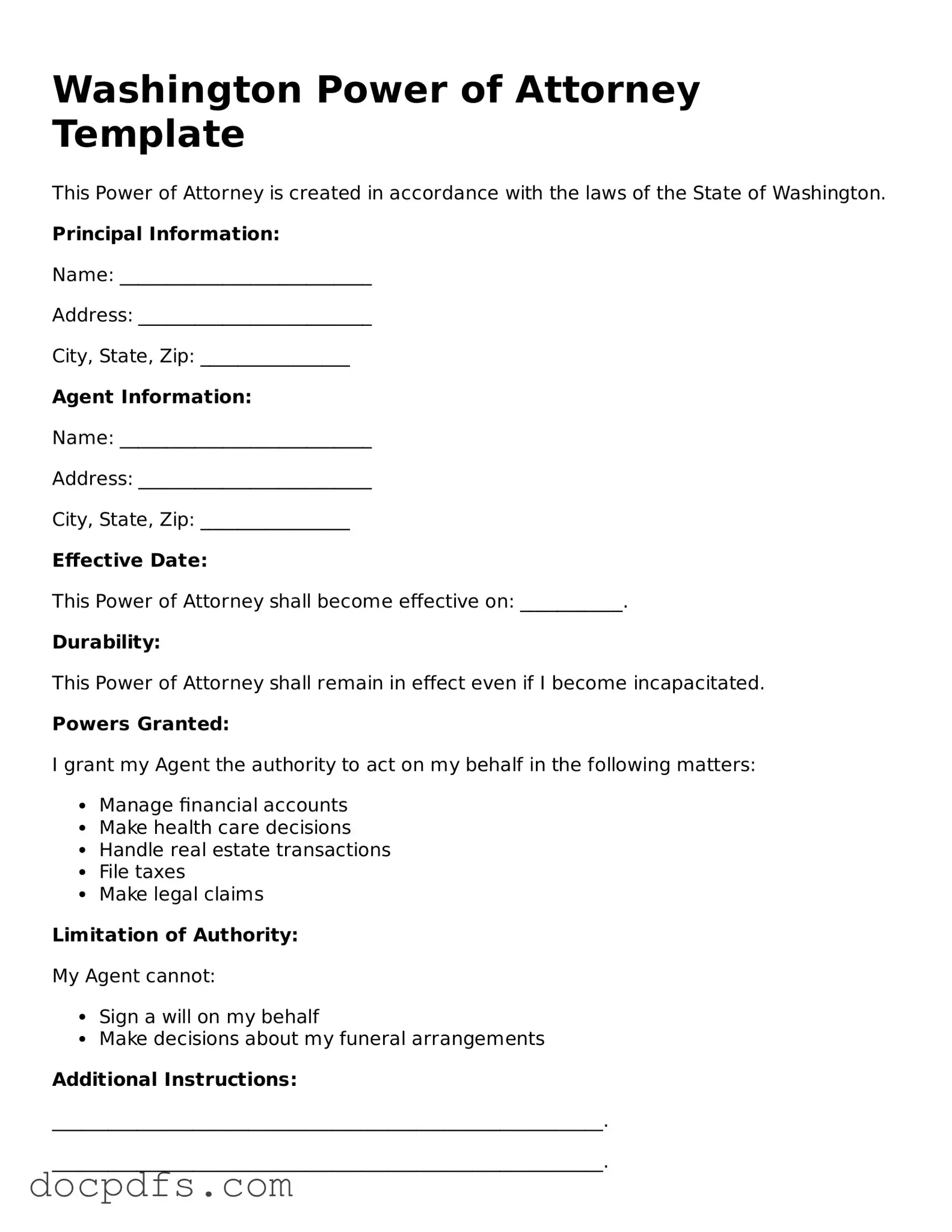Free Washington Power of Attorney Form
A Washington Power of Attorney form is a legal document that allows one person to appoint another to act on their behalf in financial or medical matters. This form grants authority to the designated individual, known as the agent, to make decisions and handle transactions as specified by the principal. Understanding how this document works can help you ensure that your wishes are respected when you cannot make decisions for yourself.
Open Power of Attorney Editor Now
